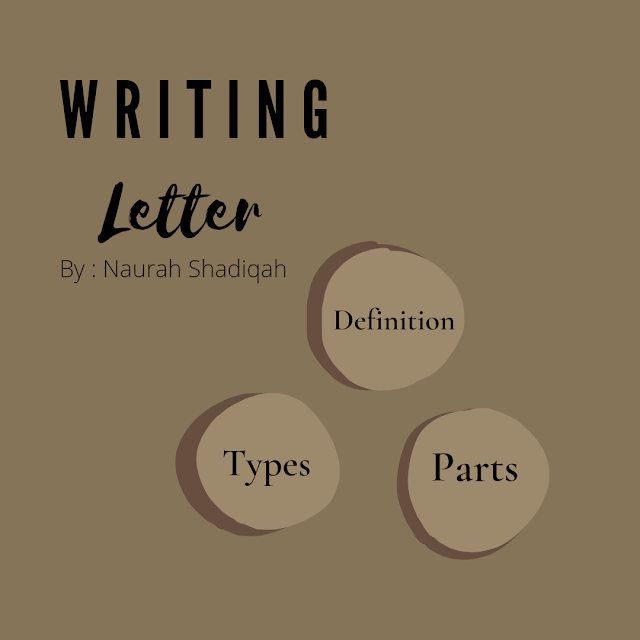Ok guys, I'm back with Writing Letter materials. And i hope this blog is useful for you 🙏😀
______
______
DEFINITION OF LETTER
'A letter is a written message from one party to another containing information' means, letter is a message written on one side the other containing the information . Its functions cover five areas: means of notifications, requests, thoughts and ideas; written evidence; reminder; historical evidence; and work guidelines.
TYPE OF LETTER
Types of letters can be divided into three, namely personal letters, official letters, and official letters.
- Personal letter
Personal letter is a type of letter containing personal needs which is usually written personally and addressed to another person using non-standard language. Private letters have no binding rules and personal letters can be written according to the taste of each author.
Characteristics of a Personal Letter
A personal letter has at least the following 5 characteristics:
1. Does not have letterhead
2. Does not have a letter number
3. Welcome or closing greetings vary widely and are more casual, non-formal
4. Use free language (not standard) according to the author's wishes
5. Format free letter
Official letter is a letter made by a certain agency, organization or corporate institution addressed to a certain person or other institution. The existence of these agencies, institutions, organizations and companies is legally authorized. Examples of official letters are official letters, commercial letters, and social letters.
The characteristics of an official letter
1. use effective sentences; simple, concise, clear, polite and attractive.
2. use standard language according to refined spelling (EYD) both spelling, vocabulary, and grammar.
3. The presentation uses the form of full block, semi block or indented block.
4. Using letterhead.
5. Listed letter number, attachments, and subject.
6. Usually includes a stamp or stamp

- Service Letter
Official letter is a letter issued by a certain agency. In other words, official letters are letters that are used as a means of communication within an agency or between agencies. An official letter is also called an official letter because this letter can clearly be justified for its authenticity.
Characteristics of an official letter
1. Has a head or letterhead, which is the name and address of a certain agency.
2. Have a date, and letter number.
3. Has a subject, namely the purpose of the letter and attachments.
4. Has a certain agency stamp on the signature section.
5. Using standard language.
6. May have a copy.
Letter Writing Tips
Now that we have learned the basics of communicating via letters and the types of letters as well, let us focus on some tips for the actual letter writing.
1] Identify the type of letter
This obviously is the first step of the letter writing process. You must be able to identify the type of letter you are to be writing. This will be dictated by the person the letter is addressed to and the information that will be conveyed through the letter. Suppose you were writing to the principal of your college to ask for leave, this would be a formal letter (Types of formal letters with samples). But say you were writing to your old college professor catching up after a long time. Then this would be a personal (informal) letter.
2] Make sure you open and close the letter correctly
Opening a letter in the correct manner is of utmost importance. Formal letters open with a particular structure and greeting that is formal in nature. Informal letters can be addressed to the person’s name or any informal greeting as the writer wishes
Even when closing the letter, it must be kept in mind what type of letter is being written. Formal letters end respectfully and impersonally, whereas informal letters may end with a more personal touch.
3] Establish the main intent of the letter
Once you start writing, make sure to get to the point as soon as possible. Especially in formal letters, it is important to immediately make clear the purpose of the letter.
4] Be careful of the language
A letter is always supposed to be polite and considerate. Even if it is a complaint letter, the point must be made in a careful and courteous manner. So it is necessary to use polite expressions and civil language in all types of letters.
5] Length of the letter
And the other important factor to be considered is the length of the letter you are writing. It should be kept in mind that formal letters are generally to the point, precise and short. Lengthy formal letters tend to not have the desired effect on the reader. The length of an informal letter is determined by the message in the letter and the relation to the recipient.
Video's about writting a letter :













